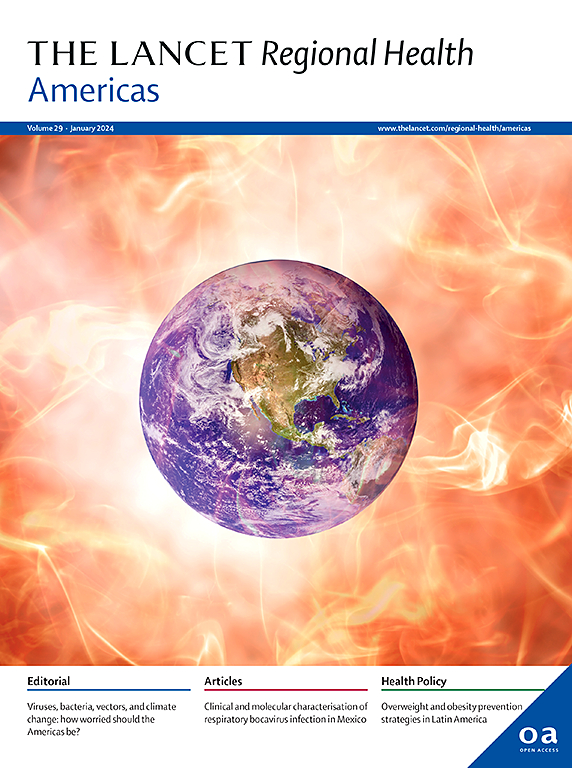Transfusion-transmitted infections: risks and mitigation strategies for Oropouche virus and other emerging arboviruses in Latin America and the Caribbean
IF 7
Q1 HEALTH CARE SCIENCES & SERVICES
引用次数: 0
Abstract
Arboviruses impose a major public health burden in Latin America and the Caribbean due to widespread and potentially severe infections causing microcephaly and long-lasting arthralgia. Beyond canonical vector-borne transmission, the magnitude and risk factors for transfusion-transmitted infections (TTIs) are unclear. In this narrative report, we use analyses of virological data such as infection symptomatology, viremic periods, and viral loads, to argue that dengue, Oropouche, Zika, yellow fever, and Chikungunya viruses pose an under-investigated risk of TTIs. An analysis of socioeconomic data showed that blood donation rates in Latin America and the Caribbean correlated with gross domestic product (r = 0.53, p = 0.0021) and health expenditure (r = 0.5, p = 0.0045), highlighting that resource limitations impact blood screening. Risk maps based on vector occurrence and ecological variables showed that Central America and Northwest coastal Brazil are high-risk zones, making surveillance, vector control, vaccination, and cost-effective blood screening crucial for mitigating TTIs, including Zika and potentially Oropouche viruses in pregnant women.
输血传播感染:拉丁美洲和加勒比地区Oropouche病毒和其他新出现的虫媒病毒的风险和缓解战略
虫媒病毒在拉丁美洲和加勒比造成了重大的公共卫生负担,因为它广泛且可能严重感染,导致小头畸形和长期关节痛。除了典型的媒介传播外,输血传播感染(tti)的规模和危险因素尚不清楚。在这篇叙述性报告中,我们使用病毒学数据分析,如感染症状学、病毒期和病毒载量,来论证登革热、欧罗波切病毒、寨卡病毒、黄热病和基孔肯雅病毒构成了未充分调查的传播感染风险。对社会经济数据的分析表明,拉丁美洲和加勒比地区的献血率与国内生产总值(r = 0.53, p = 0.0021)和卫生支出(r = 0.5, p = 0.0045)相关,突出表明资源限制影响了血液筛查。基于病媒发生和生态变量的风险图显示,中美洲和巴西西北沿海是高风险地区,因此监测、病媒控制、疫苗接种和具有成本效益的血液筛查对于减轻包括孕妇中的寨卡病毒和潜在的Oropouche病毒在内的传播感染至关重要。
本文章由计算机程序翻译,如有差异,请以英文原文为准。
求助全文
约1分钟内获得全文
求助全文
来源期刊

Lancet Regional Health-Americas
Multiple-
CiteScore
8.00
自引率
0.00%
发文量
0
期刊介绍:
The Lancet Regional Health – Americas, an open-access journal, contributes to The Lancet's global initiative by focusing on health-care quality and access in the Americas. It aims to advance clinical practice and health policy in the region, promoting better health outcomes. The journal publishes high-quality original research advocating change or shedding light on clinical practice and health policy. It welcomes submissions on various regional health topics, including infectious diseases, non-communicable diseases, child and adolescent health, maternal and reproductive health, emergency care, health policy, and health equity.
 求助内容:
求助内容: 应助结果提醒方式:
应助结果提醒方式:


